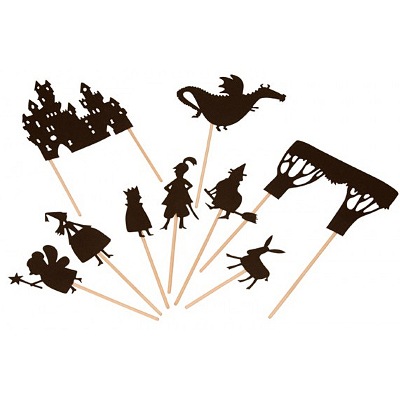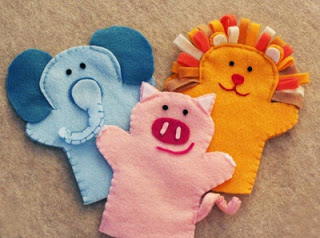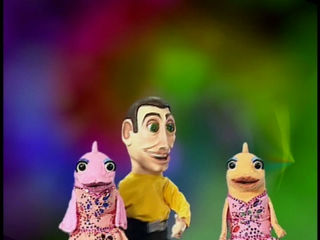Blacklight Puppetry
Black light puppetry is a form of puppetry where the puppets are operated on a stage lit only with ultraviolet lighting , which both hides the puppeteer and accentuates the colours of the puppet. Finger puppets normally have no moving parts, and consist primarily of a hollow cylinder shape to cover the finger. Human movements can be achieved up to some extent with these puppets as all their body parts are movable using backlight puppetry. As these puppets are made of cloth, sew the parts together and your puppets will move easily. Once you master these basic ideas, you can try the bigger marionettes with the help of do-it-yourself kits.
The puppeteers perform dressed in black against a black background, with the background and costume normally made of black velvet The puppeteers manipulate the puppets under the light, while they position themselves unseen against the black unlit background. Sock puppets are also popular in many puppet performances, as they are simple to make and easy to use. Sheets were produced for puppets and scenery from the 19th century for children’s use. Object Puppets can be created with found everyday objects either assembled in advance or during performance.
Supermarionation is a method invented by Gerry Anderson which assisted in his television series Thunderbirds in electronically moving the mouths of marionettes to allow for lip-synchronised speech. Throughout our ministry, we’ve focused our puppetry on using arm rod puppets and a couple of human arm puppets. We were able to purchase a full-bodied boy and girl puppet and two clown fish puppets for under $200.
However, the difference, if the shadow puppets or like all forms of shadow puppet in general show performances in the form of a shadow (silhouette) of the black color, while Motekar Puppet have discovered a new technique so that the shadow of puppets can be performed with full color. This allows you to use full body puppets where the audience can see their legs and gives you more room for creativity in performing your play.
I was asked to teach a weekly puppet class at a nearby non-public school and planned to team up with a guy that had used black light puppets in the past, so that was to be part of our curriculum. Our first blacklight was a small flashlight ordered from Puppets from One Way Street online. We mounted them at the top of our permanent theater so they shine down on the puppets. If you intend to do the puppets outside the theater, you’ll probably want to mount lights above the puppets and on the floor so you can illumine the entire puppet. The Ancient Greeks method of divination leaves little room for doubt that ventriloquism played a part.
Although there is not any definitive proof, there are many occurrences in the distant past of a supernatural voice that can only be explained by the art of ventriloquism. A natural conclusion is that the priesthood practiced the art of ventriloquism to deceive the worshippers because the description of the voice is very much like that of the voice found in ventriloquism. There is little doubt that the art of ventriloquism was used by spiritual leaders to deceive and keep power over their followers.
In the works of M. L’abbe La Chappelle, published in 1772 the ventriloquism achievements of Baron Menge of Vienna and those of M. St Gille a grocer of Paris are mentioned. During the middle of the 20th Century ventriloquism remained very popular due to Edgar Bergen and his famous wooden boy Charlie McCarthy and their radio show. The popularity of ventriloquism diminished during the latter part of the 20th Century due to the appeal of film and TV. Fortunately ventriloquism has recently made a comeback, notably Terry Fator, winner of America’s Got Talent 2007, and Jeff Dunham, a 2 time winner of Funniest Male Stand Up Comic have done much to popularise it again.
Fortunately, ventriloquism has today, in our more enlightened times, emerged as a wonderful performing art that can be enjoyed by young and old alike. Puppets were used in India back in the 11th century and quickly spread to other parts of Asia. Puppets in history have been used for presenting good, evil, greed or jealousy with the risk of identifying the real characters. Puppets were made from carved sticks in ancient India and were mostly decorated. It can be speculated that sock puppets might have been invented during that time.